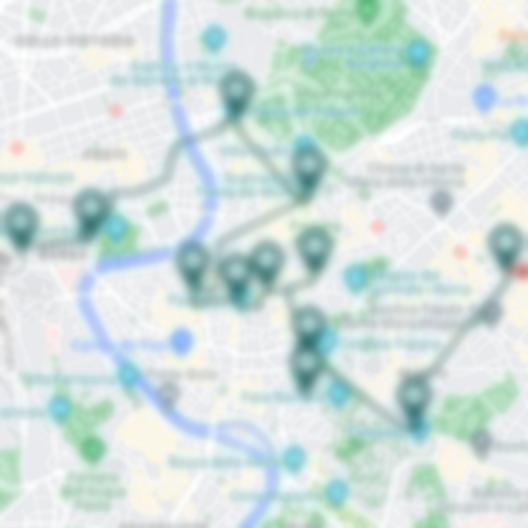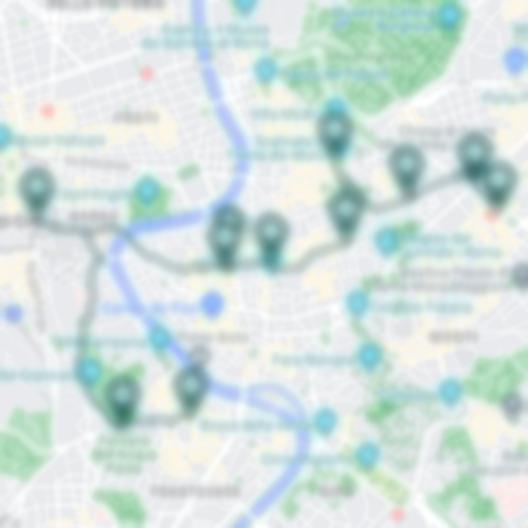Are you considering traveling to Italy or other EU countries in 2024? Well, you should be aware that you might need to apply for an ETIAS (European Travel Information and Authorisation System) travel authorisation. This guide will cover the necessary documents, information, and fees associated with the application process.
What is ETIAS?
A significant transformation in European travel regulations will be implemented in 2024. Travel authorization known as the European Travel Information and Authorization System (ETIAS) will be obligatory for more than 60 visa-exempt countries. This covers approximately 1.4 billion individuals who seek to visit European countries.
Unfortunately, ETIAS applications are not currently being accepted and the system is not operational yet. Official EU page here
What is ETIAS and Who Requires it?
ETIAS, a travel permit, is mandatory for nationals of visa-exempt countries planning a trip to any of the 30 European countries tied to this system. Your passport will hold a link to your ETIAS, which will stay effective for up to three years or the date of passport expiration, depending on which is earlier. A new ETIAS is mandatory when you get a new passport.
ETIAS will allow you access to these European territories for short-term stays, typically up to 90 days within a span of 180 days. Please note, ETIAS does not ensure entry: your passport and other documents will be checked at arrival and evaluated against entry conditions.
How to Apply for ETIAS Travel Authorization?
Either the official ETIAS website or the ETIAS mobile application can be used to fill out the application form. It will cost EUR 7 to apply for ETIAS though some travelers may be exempt from paying this charge.
What is the ETIAS Application Process Like?
Most applications are processed within minutes. However, it may take up to four days for a decision in some cases. Be prepared to wait up to 14 or 30 extra days if additional documents, details, or an interview are requested, respectively. Therefore, applying well in advance of your scheduled travel is advised.
What Happens After You Apply for ETIAS?
An email acknowledgement with a unique ETIAS application number is sent after application submission. An outcome email will be sent once your application has been assessed. It is crucial to verify the details on your ETIAS approval against your passport. A discrepancy may lead to being denied at the border.
If the application is rejected, the email will list the reasons and provide an appeal process, competent authority contact, and a timeline to appeal.
How Long is Your ETIAS Valid for?
Your ETIAS is valid either for three years or until the passport used in the application expires, depending on which happens earlier. ETIAS is meant for temporary stays for a maximum of 90 days within a span of 180 days. During the entire stay, a valid ETIAS travel authorization is compulsory.
What to Do Upon Arrival at the Border?
Ensure that the passport you are carrying is the one used while applying for ETIAS as it is linked to your authorization. A valid ETIAS does not guarantee automatic entry, and your compliance with entry conditions will be evaluated.
What Should Your ETIAS Checklist Include?
- Before booking your ticket or accommodations, apply for ETIAS in advance.
- Ensure that your passport and ETIAS details align.
- Incorrect details result in denial of boarding and entry.
- Confirm that your ETIAS is valid and be aware of your allowed stay period.
- Ensure your passport has validity extending three months beyond your intended departure.
- Be aware that exceptions apply.
Which European countries require ETIAS?
There are thirty European nations that expect travelers who are exempt from visas to hold an ETIAS travel authorization.
ETIAS, short for European Travel Information and Authorization System, is a travel authorization required by 30 countries in Europe. These include Austria, Belgium, Bulgaria, Croatia, Cyprus, Czech Republic, Denmark, Estonia, Finland, France, Germany, Greece, Hungary, Iceland, Italy, Latvia, Liechtenstein, Lithuania, Luxembourg, Malta, Netherlands, Norway, Poland, Portugal, Romania, Slovakia, Slovenia, Spain, Sweden, and Switzerland. By obtaining the ETIAS authorisation, travelers from visa-exempt countries can freely move within these nations.
Who Needs to Apply for an ETIAS Travel Authorisation?
If you are a citizen of a visa-exempt country, you will need to apply for an ETIAS travel authorization for your short-term stay. Countries usually exempted from visa restrictions but requiring ETIAS include Albania, Antigua and Barbuda, Argentina, Australia, Bahamas, Barbados, Bosnia and Herzegovina, Brazil, Brunei, Canada, Chile, Colombia, Costa Rica, Dominica, El Salvador, Georgia, Grenada, Guatemala, Honduras, Hong Kong, Israel, Japan, Kiribati, Macao, Malaysia, Marshall Islands, Montenegro, New Zealand, Nicaragua, North Macedonia, Palau, Panama, Paraguay, Peru, Saint Kitts and Nevis, Saint Lucia, Saint Vincent and the Grenadines, Mexico, Micronesia, Moldova, Samoa, Singapore, Solomon Islands, South Korea, Taiwan, Timor-Este, Tonga, Trinidad and Tobago, Tuvalu, Ukraine, United Arab Emirates, United Kingdom, United States of America, Uruguay, and Venezuela.
Do certain traveler categories require ETIAS authorisation?
Yes, there are a few exceptional cases where nationals from countries that commonly require visas may be able to travel with ETIAS authorization instead. These include students going on school trips, recognised refugees, and members of NATO’s armed forces or those traveling on Partnership for Peace business. Stateless persons would also need an ETIAS authorisation.
Who is exempt from the ETIAS authorisation process?
ETIAS travel authorisation is not required for nationals of European countries that are part of the ETIAS, nationals from countries that already require a visa to enter any of the ETIAS countries, and beneficiaries of the UK’s Withdrawal Agreement. Besides, there are specific exemptions for nationals of Andorra, San Marino, Monaco, the Vatican, and Ireland, as well as for refugees, stateless individuals, and holders of certain residence permits or travel documents.
What are the ETIAS requirements for UK nationals?
British citizens must have a valid ETIAS authorisation for short-term stay (less than 90 days in a 180-day period) in the ETIAS countries. For longer stays, they need to meet the entry requirements under national or EU migration law, such as obtaining a visa or a residence permit.
Are there special ETIAS exemptions for beneficiaries of the Withdrawal Agreement in the UK?
Yes, UK nationals and their family members who are Withdrawal Agreement beneficiaries are not required to have an ETIAS for travel. They can reside on the territory of their European host country and visit other ETIAS countries, with the condition that they possess documents proving their status.
When Should You Apply for a Limited Validity ETIAS Travel Authorisation?
Embarking on a journey to Italy or any European Union (EU) country requires obtaining a visa or travel authorisation. An interesting variant is the European Travel Information and Authorisation System (ETIAS) with limited validity. This guide aims to help you navigate the process of acquiring a limited validity ETIAS for your travel in 2024. Keep in mind, however, that ETIAS is not yet operational, and no applications are being accepted currently.
What Privileges Does a Limited Validity ETIAS Offer?
A limited validity ETIAS differs from the standard one. Unlike the standard ETIAS, which allows you to travel across all the 30 European countries requiring ETIAS, a limited validity ETIAS only permits travel to countries explicitly stated in your travel authorisation. The duration of your authorisation is determined by the respective national authorities and can extend up to a maximum of 90 days from your entry into the approved countries. The benefit of a limited validity ETIAS is that it is usable for multiple entries.
What Are the Next Steps After Your Request?
Following your application, you will receive an email notifying you of your request’s outcome. If you are granted a limited validity ETIAS, the email will list details such as the start and end dates of your authorisation and the countries you are permitted to travel to. If your appeal is rejected, you hold the right to appeal against the decision.
It is crucial to keep in mind that a limited validity ETIAS only enables you to enter the territories of the designated countries in your authorisation. Additionally, your limited validity ETIAS will be revoked once you receive a new standard ETIAS valid for all Europe.
What Document Do You Need to Apply?
If you plan on visiting Europe in 2024, your first step should be to ensure your travel document meets the ETIAS requirements. The document must have at least three months of validity remaining and should not be more than ten years old. A document not adhering to these standards or deemed non-compliant with international norms may be both a stumbling block during the application process and a potential issue during your pre-boarding verification.
Do note, the European Council and European Commission maintain lists of approved documents, which can be referred to if you are uncertain about your travel document’s eligibility.
What are the Specific Rules for Travel Documents from Certain Areas?
Mostly, holders of a biometric passport can apply for ETIAS directly, but other passport types will require a visa. You should check the specific criteria for your country before proceeding with the application.
What Information is Required on the Application?
When applying for your ETIAS, there is certain information you must provide. This includes personal details, travel document details, and specifics about your education, current occupation, intended travel, and criminal history or past travels to conflict zones. You will also need to declare the information you provide to be accurate and acknowledge understanding the requisite entry conditions to the European countries.
In cases where someone else submits your application, additional details on their relationship to you and a signed declaration of representation will be necessary.
Are There Additional Protocols for Minor Applicants?
For applicants under 18 years of age, a person with a legal parental authority or guardianship must submit the application.
What are the Fees Associated with the Application?
Be prepared to pay a EUR 7 fee with a payment card when applying for ETIAS. An exception to this fee applies to applicants under 18 or over 70 years old, as well as immediate relatives of EU citizens or non-EU nationals entitled to free mobility across the EU.
Checkout official EU FAQ section regarding the ETIAS program.
To round up, it’s evident that the EU has mastered the art of surprising us all with an Oscar-worthy performance of organized bureaucracy. 😅Navigating between those mouthful abbreviations and multiple checklists, we might almost forget we are planning a vacation! But we have to hand it to them. Where else could you find a system that embraces the spirit of unity, cooperation, and mutual respect while also ensuring they make our lives just that tiny bit more interesting and inspiring us to become part-time diplomats with the paperwork to show for it! So kudos to the EU, turning travelers into extraordinary globetrotters, one ETIAS application at a time. And remember, the more you travel, the easier it becomes – or so we optimistically believe! Get your highlighters ready, traveler, your EU trip of 2024 awaits! 🥹


